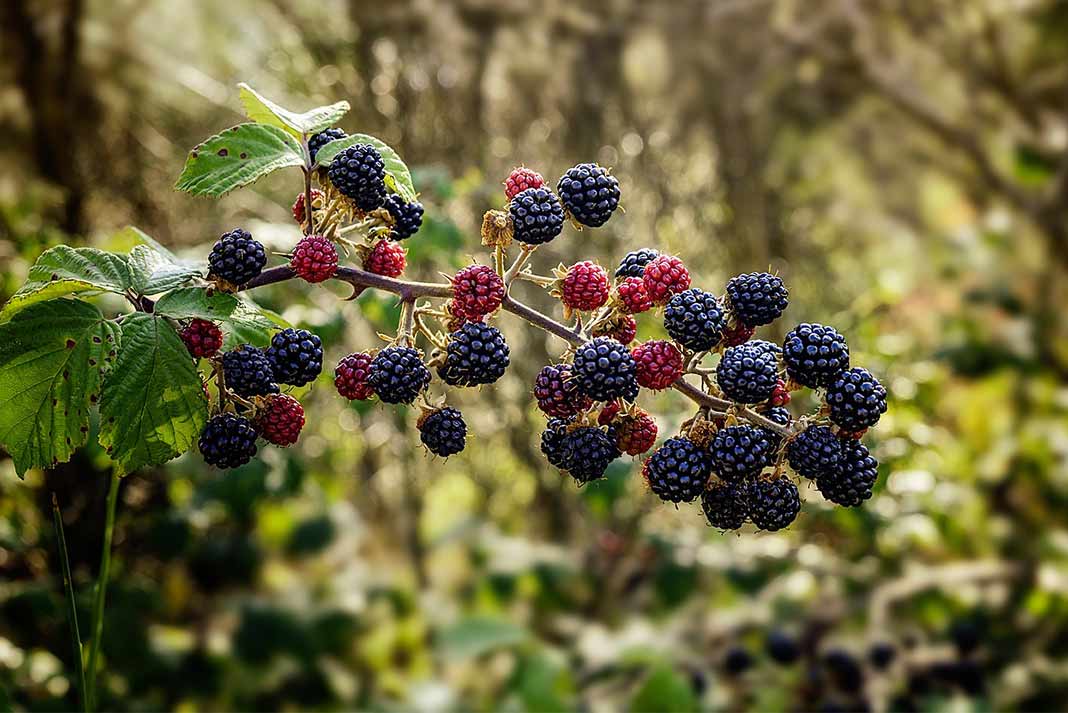
There’s a wonderful biopic on the Brontë sisters. I happen to be an aficionado of all things English, literary, cottagelike, Victorian, articulate, poetic and dramatic — and this film involves all of those and more. What does the film To Walk Invisible have to do with this month’s focus on food? Not much, except there’s this one scene where sister Emily Brontë sits pensively snacking upon — wait a minute — that’s right: she’s feasting upon freshly picked blackberries as though they were little bon-bons.
Change the way we view our food, and we change the way we nourish our bodies. That is a simple truth I’ve learned to embrace.
We often view food as a comfort. The very first time I heard that expression, I lived in Nebraska and taught over the border on the Pine Ridge reservation in South Dakota. The department chair invited me to join her on a lunch break. “I’m in the mood for comfort food,” she said, mentioning in the same breath the name of a local drive-in.
She was amused and nonplussed when I inquired naïvely, “What’s comfort food?”
She said, “You know, food that makes you feel good, like milkshakes, biscuits and gravy, pumpkin pie.”
I have since discovered that the “comfort” aspect is capable of being tied more to the person who prepared the food or the surroundings and circumstances in which the food is presented. In a loving, joyous setting, even so-called “health food” may take on the property of being comfort food.
Alternatingly, we may treat food as a reward, which is not its essential function. Obsessed with fine dining, we develop a discerning palate; we crave complex flavors. This obsession can be costly, generally implicating a high-fat, high-salt intake. Most of us are gourmands and not gourmets: we should insist upon tasty food but not go overboard.
At times, we may treat food as medication. Whenever we feel a ping of anxiety or remorse, we crave all the wrong things. Some reach for chocolate; others clamor for chips. Still others indulge complex carbohydrates, like muffins, cupcakes and bagels. Regardless of our predilection, we are likely to fall prey to a state of imbalance that results from the mass consumption of rich foods.
The key is to nip the impulse in the bud and quickly identify the motive behind the mad draw toward certain foods. Are we using food for comfort, reward or medicine? We can then pause for a moment to gather our shakes (not the milky variety!) At that point, we are in a position to reimagine our purpose for eating. Think back to the pioneer days, when we lacked certain conveniences. We were so busy moving about and exerting; food was our fuel then. In our current vastly more sedentary state, food is more of an extra or an amusement rather than the “staff of life” it was long ago. In this new energy, we should engage an internal conversation with our own inner guidance. We know, intuitively, that should we choose to ignore that guidance, our bodies will wreak havoc with us.
We need to remember that the body is the temple for the Divine within. Viewed in this manner, we should be respectful and view all the food that goes into us as sacred offerings. Drinking tea regularly can be a solid reminder of this. It’s not that difficult to make new routines, really. I remember the concept of patterning from Psych 101. If we do something in the same way over and over, then through repetition, that behavioral chain is reinforced in the brain’s pathways. If we consistently fill our bowls with blackberries rather than ice cream, eventually, that becomes our familiar routine. With a little mindfulness and presence, the practice is rendered enjoyable.
Let us emerge from this long hibernation renewed, healthy and vital. It’s absolutely not too late to make positive changes. Stores are filled with healthy, affordable, organic options. That is the stuff we should stock in refrigerators and pantries. We need to recognize and honor who we truly are within — and nurturance of the body temple is but a single strand of this worthy effort.












